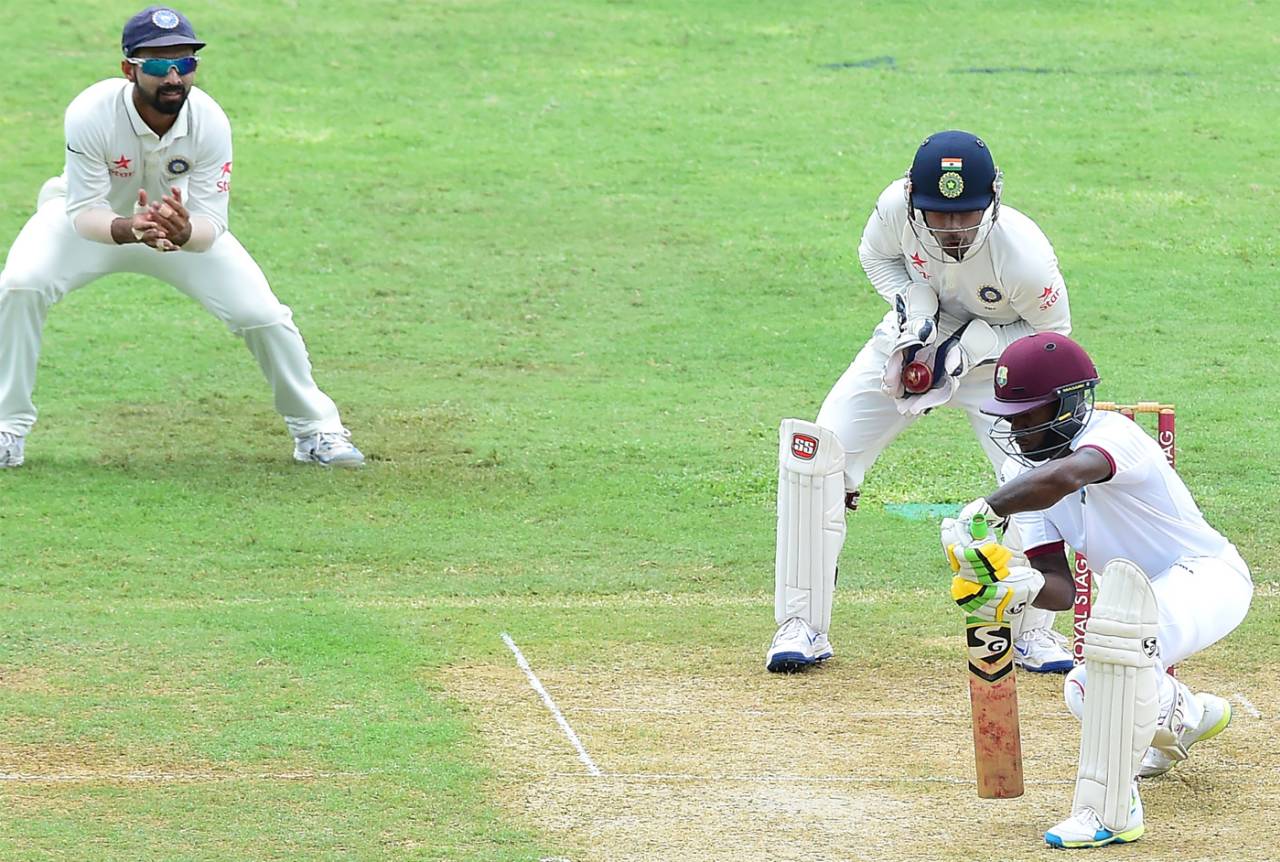Are we living through a new era of spin?
Warne and Murali's big turn has given way to something more subtle
Jon Hotten
27-Oct-2016

Today's spinners are looking to counter the bat's domination with smaller turn • AFP
The life of the impoverished writer has an occasional upside, and one of those came along a couple of weeks ago at the Guildford Book Festival, where I did an event with Tom Collomosse, cricket correspondent for the Evening Standard and Mark Nicholas, the former Hampshire captain turned commentator. Nicholas told a story about facing Derek Underwood on an uncovered pitch. It was early in his career, which began at Hampshire in 1978. They were playing Kent in a three-day game and when the rain came down, the captains got together and negotiated a deal: Hampshire would chase 160 on the last afternoon to win.
Paul Terry and Gordon Greenidge went in. Greenidge took six from the first over. Underwood opened at the other end and Terry got through it by playing from as deep in his crease as he could get. Greenidge took another six runs from the next at his end. Underwood came in again, having had six deliveries to work out the pitch. By the time Nicholas had been in and out shortly afterwards, Hampshire were 12 for 4.
"Derek didn't really bowl spin on wet pitches," he explained. "What he did was hold it down the seam and cut the ball. When you were at the non-striker's end, you could hear it" - he made a whirring sound - "it was an amazing thing."
Nicholas described the nearly impossible task of trying to bat against a ball that reared up from almost medium pace with fielders surrounding you and the immaculate Alan Knott breathing down your neck from behind the stumps. Hampshire lost, of course.
T20 raised the value of cleverness, of invention. Big bats were sometimes defeated by small or no turn. The slow ball was harder to hit
"Deadly" Derek and uncovered pitches are a part of history now, but those who can recall his flat-footed, curving run and liquid movement through the crease saw a bowler who was much more than just a specialist on drying wickets. Whatever the weather, whatever the day, he had the ball for it: 2465 first-class wickets at 20.28 tell his story.
Underwood had a thousand of those wickets by the age of 25 and retired in 1987 at 42. The game, and spin bowling, have changed irrevocably since, yet the spooky art is still shining, and perhaps about to enter a new golden age.
R Ashwin stands at the top of the Test bowling rankings, New Zealand the latest to fall to his strange magic. His buddy Ravindra Jadeja knocks them down at the other end. Bangladesh unleashed the 18-year-old Mehedi Hasan on England, and he had a five-bag on day one. Even England - brace yourselves for this - played three spinners in that game, and may well do so throughout the first part of the winter. Far from killing spin bowling, as it was supposed to do, the new way of batting has encouraged a new style of response.

On wet wickets, Derek Underwood would bowl cutters•PA Photos
To chart an evolution is fascinating. It is not so long since Shane Warne and Muttiah Muralitharan and Anil Kumble slipped from the game, Warne having reasserted legspin, Murali reinventing offspin. The future looked as though it may be big; huge freaky turn of the kind that pair specialised in. Instead, it has become something more subtle: the notion of beating the bat narrowly on both edges.
These are broad brush strokes of course, and evolution doesn't come in a straight line. It's deeply intriguing though that T20 cricket has played such a role. Through Ashwin, who emerged there, and Jadeja and Sunil Narine and others, it raised the value of cleverness, of invention. Big bats were sometimes defeated by small or no turn. The slow ball was harder to hit. As the techniques bled into Test cricket, where wickets deteriorate and change and the psychology of batting switches, they have grown in value.
We're undoubtedly living through an era in which batting has been revolutionised, undergoing its greatest change in a century. It's the nature of the game that bowling should come up with an answer, and maybe we're starting to see its first iterations. As Jarrod Kimber pointed out in his piece about the inquest into the death of Phillip Hughes, there are more very fast bowlers around now than for generations. Spin bowling is making its move too. And just as the small increments in speed increase in value the higher they go - ask any batsman about the difference between 87mph and 90mph, and then 90mph and 93 or 94mph - the small changes that, for example, Ashwin is producing have their dividend too.
Underwood once described bowling, tongue no doubt in cheek, as, "a low-mentality occupation". His variation was as simple as an arm ball, and yet in the pre-DRS age, it brought him many lbw decisions. Now the subtle changes in the spooky art are wrecking a new and welcome kind of havoc of which Deadly will surely approve. Should we call it the era of small spin?
Jon Hotten blogs here. @theoldbatsman